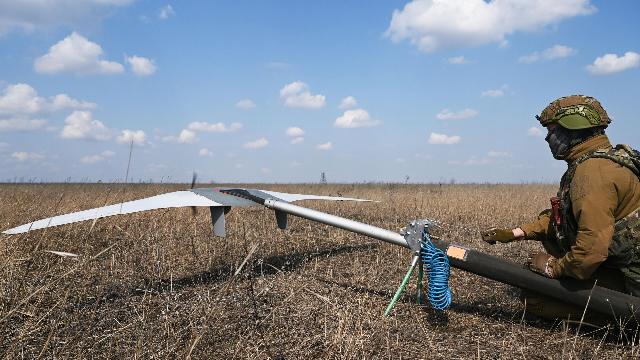The founder of the Stratim design bureau with the call sign Obi-Wan said that earlier it took about 6 thousand shells to hit a target, and with objective control of the UAV it was possible to reduce this figure to 60
MOSCOW, May 25. /tass/. The use of unmanned aerial vehicles (UAVs) for objective control of the accuracy of the barrel and rocket artillery has significantly increased its effectiveness during a special military operation in Ukraine. This was stated to TASS by the founder of the Stratim design bureau with the call sign Obi-Wan.
"The real use of unmanned aerial vehicles for objective control was developed only in the second year of its development. Their use has radically improved the efficiency of barrel and rocket artillery, as well as mortars, by two orders of magnitude. Let's say that when an enemy stronghold was shelled earlier, the fighters did not see where they were shooting. The result was determined based on the probability of projectiles hitting. According to the existing standards, 6 thousand shells should be spent on the destruction of one stronghold. Accordingly, after firing 6 thousand shells, it was believed that the target was destroyed," Obi-Wan said.
The specialist noted that earlier, gunners were also used to adjust the rocket artillery, which visually determined the accuracy of the hit. "Now drones have replaced humans. A specific target is selected, a drone is released, a series of sighting shots is fired, then fire begins to kill, the UAV makes adjustments, and the target is hit from the fourth to fifth time. This is at best, but even if the target is destroyed after 60 shots, there is a huge difference between 60 shells and 6 thousand. At the same time, one Mavika-type drone costs like six shells. All this gives incredible efficiency: we understand where we are getting to, and if necessary, we can quickly adjust. We shoot not for a week, but for half an hour and complete the task," said the founder of the Design Bureau.
According to him, the Armed Forces of the Russian Federation use multirotor drones to adjust the work of mortars and rocket artillery. "To adjust the operation of various long-range multiple launch rocket systems and so on, artillery reconnaissance drones are required, which operate at a long range. Ordinary copters cannot physically cover such distances. In this case, aircraft-type devices are used, including the well-known Orlan and Geoscan," said the founder of Stratim.
New technologies
The specialist noted that from the point of view of the development of means of objective control of the operation of rocket artillery, two directions can be distinguished. "There are various projects of high-altitude platforms - these are stratospheric pseudo-satellites, aircraft that are launched to an altitude of 18-22 km and hang there for several months. It is difficult to get it, you can knock it down, but due to the high altitude it is difficult. The stratospheric pseudo-satellite does not need to be launched specifically, it is always located at a given point and allows you to observe a certain area of space. <...> While such devices are at the prototype stage, and no one has anything like this, but development is moving in this direction," Obi-Wan said.
Also, the founder of the Stratim Design Bureau stressed that the creation of a high-quality satellite constellation will make today's means of objective control irrelevant. "The second is to improve the quality of optics and resolution of satellite monitoring - Earth remote sensing satellites. Therefore, the next stage in the development of objective control tools will be a high-quality satellite constellation, which will always be above the object, have the high resolution that is necessary for artillery. Then, in principle, in clear cloudless weather during the daytime, drones are not particularly needed," he said.

